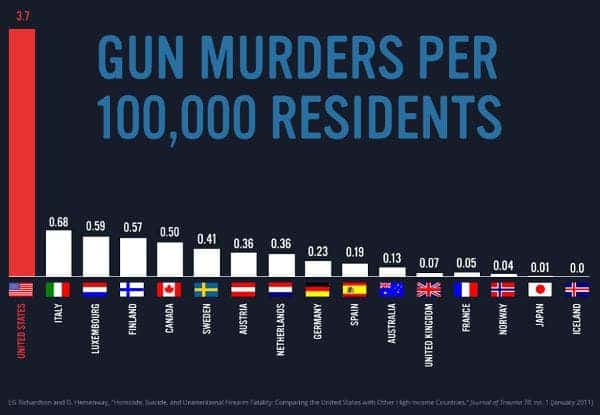Project – Linear Regression - State Policy On Firearm Usage

For my linear regression project at Metis I picked the topic of gun violence in America. Since the horrible incident in Parkland, I have seen numerous articles and research papers investigating the efficacy of various local, state and federal policies regarding the use and access of firearms.
I was mainly inspired by this Vox article from earlier this year, but also Dr. Listman’s work more recently found here. Listman uses R and tree regression instead of python and traditional linear regression models, but my work here was certainly influenced by her post.
I surveyed a number of publically available data sets to begin my research. Ultimately, I pulled data from the CDC and scraped data from a variety of government and other organizations sites to build out my features set. I used the State Policy Index for most of my policy information. I am not able to vouch for the accuracy of this data, but it seemed fine to use for my research project.
Another promising data source was the Gun Violence Archive. This site had the perfect data for me, as I was really interested in fatal and non-fatal firearm incidents. In other words, the casualty rate instead of the homicide rate. Many studies and stats focus on homicides or suicides or both, which is fine, but I wanted to concentrate on all incidents, as this seemed to be a more important metric in the gun control debate.
Unfortunately, the Gun Violence Archive only had data for the past 72 hours on their site. After a little research I found that a much larger data set was on Kaggle. Buried deep in a Discussion forum on the site, I was able to see that there were problems with the Gun Violence Archive as a source. For one, they don’t want people using their data without going through them. They deliberately spike their data by inserting phony records. This creates a signature that they are then able to spot in the wild. Most noticeably, the 2017 mass shooting in Las Vegas incident is omitted, which is a huge outlier. The explanation is detailed here.
#Tree Regression

In the end, I decided to not use the Gun Violence Archive data. The CDC data and State Policy Index provided enough information for me to dig into and build my model. I then had to learn a great deal about handling multicollinearity, regularization and feature selection, but more on that another time.
I also discovered the new and eminent threat posed by at-home 3-D printed “ghost guns”. We could unite as a country and figure out this whole “2nd Amendment” thing once and for all, only to have anyone with a 3D printer circumvent those laws and print their own gun (and ammo?). Like most public policy issues, technology is changing the debate as it’s happening.
